japan: whirlwind japan travel, 5 cities in 10 days;
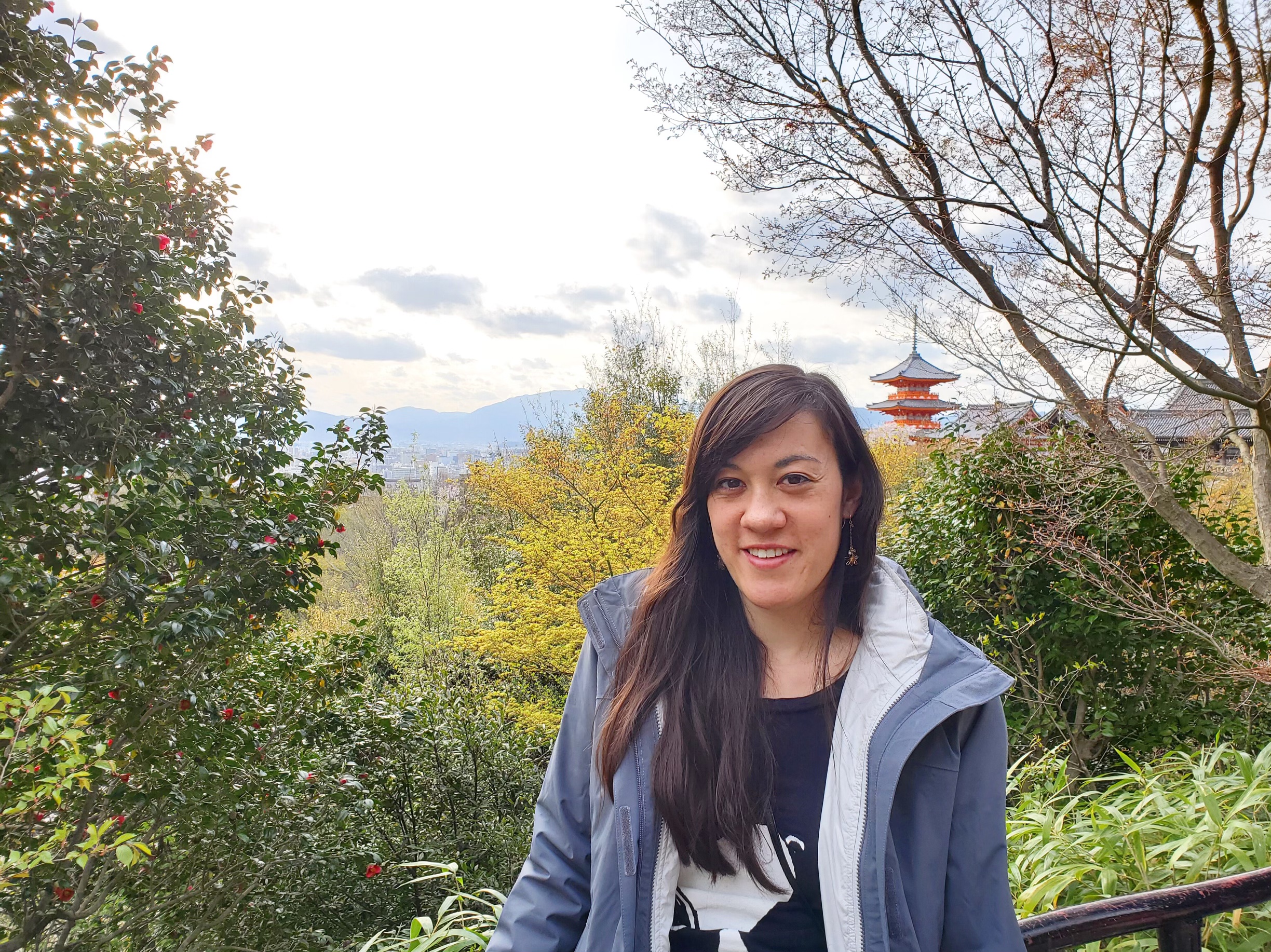
A whirlwind of Japan travel, cramming 5 cities into 10 days was amazing! So much fun getting to relive some study abroad memories, meet some friends, and find some tasty bites. I had a giant food checklist but managed to noms pretty much everything on it. I wish I had another month there to do everything I wanted to at a leisurely pace, but we did what we set out to do.
This was Tyler’s first time in Japan, but I studied abroad in Nagoya, Japan in 2011. We tried to split the difference in seeing iconic attractions while still fitting in new attractions. I’ll go through our itinerary city by city so you can follow along on our hectic journey!
If you’re planning your own trip, check out my post, the ultimate travel guide to japan;
To get the most out of your Japan travel and see as many cities as we did, you’ll want a JR Pass. If you want to learn more, check out my FAQ on japanese transit.
Itinerary
Tokyo (Days 1-2)
Tokyo is very much a metropolitan city, and while the face is different, it’s still a city! It was perfect to spend a few days getting acclimated and help me dredge the remains of my Japanese from my brain. Plus we managed to hit peak cherry blossom season which meant it was a gorgeous pink everywhere we went! Cherry blossom season is a perfect time to plan Japan travel.
For accommodations, we chose to stay at the Moxy hotel in Kinshicho. For us it was a great choice, although I don’t tout it as a must-see. Kinshicho is in the eastern part of the city. The area wasn’t the nicest, but I never felt uncomfortable. We were trying to use the last of Tyler’s Marriott points, and Moxy was only a few minutes walk from the chikatetsu (subway). So for convenience? It was perfect.
Day 1
While Tokyo has some cool attractions, I feel many iconic cultural experiences are better left to other cities. For our first day we opted for a sushi-making class and a tour of Tsukiji Fish market. You may have heard of Tsukiji market, where Michelin Star restaurants buy fish daily. The market is most famous for the tuna auction they hold every morning. If you see Tsukiji Fish Market on a map, take note that in the past year the auction itself has moved to Toyosu market. We started our tour at the new location.

Toyosu Market is actually made up of two parts. An upper level of shops with various non-fish foods and food-centered vendors. Think vendors selling miso, green tea, traditional snacks, and knives. The lower level is for fish and seafood. If you visit on your own, you’ll need a “visitor” badge, and only permitted to the top level. Our tour group was actually purchasing fish for sushi making and were able to bypass the visitor tags.
In order to minimize our status as gawking tourists, our tour guides split the group into two smaller groups. One group made their way to the lower level fish area while we stayed at the top. The vendor area was fun for gawking and shopping, and we got to sample green teas and miso. But the lower level was the highlight. The auction starts at 4:00 AM, and we were there around 11:00 AM.
There was seafood EVERYWHERE, despite the fact that restaurants were long past done making their purchases. You could see every kind of fish imaginable: squids, tentacles, and creatures I can’t identify. The seafood was so fresh that one vendor slapped an octopus tentacle in front of us and it would recoil and react. Do be careful down here if you get the chance to go! Vendors use motorized carts for moving stock and they are unforgiving. They will not stop if you’re in the way, so make sure you’re not.
After we picked up tuna and sardines for our class, we made our way to the old location of Tsukiji fish market. The auction area is closed, but the area is far from dormant. There are still a plethora of shops and vendors here as well. We explored a little and picked out a flounder that had its spine crushed before our eyes. Not a particularly endearing thing to witness, but you have to respect the circle of life and the delicious food you get. Besides what would Japan travel be without sushi?
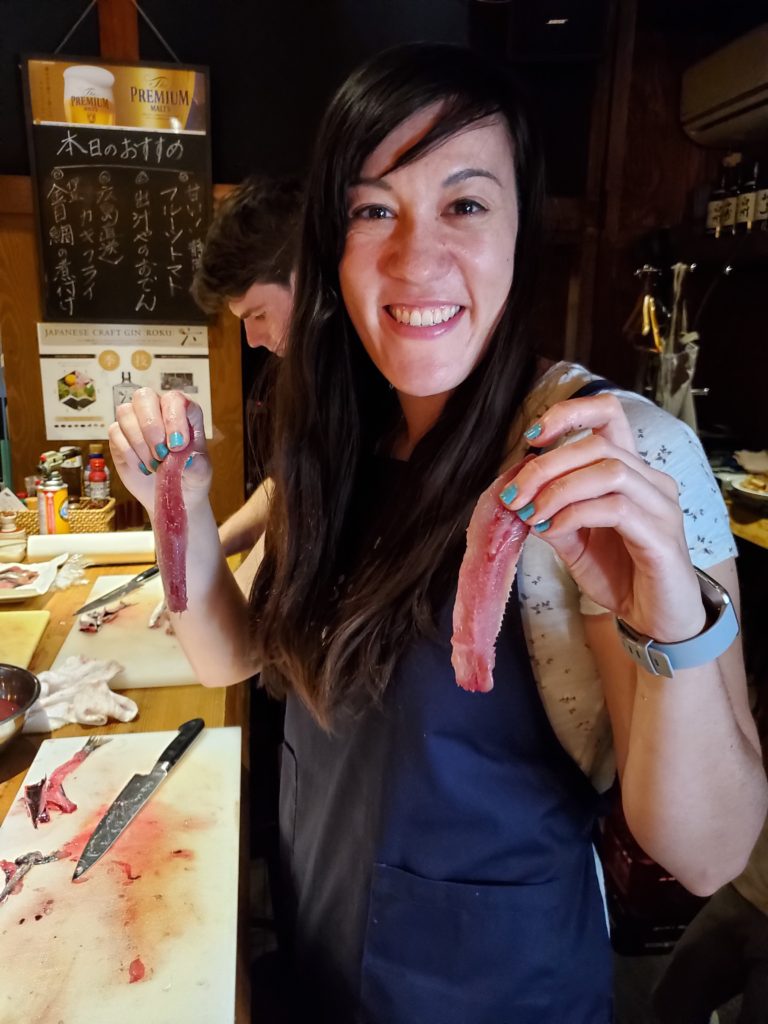
We then went back to a tiny shop nearby for our sushi making class. Morita-sensei was waiting for us. He’s a trained master sushi chef and very impressive with a knife. He walked us through how to filet a fish, and we used sardines as practice, going two at a time. I did a pretty good job, but it’s definitely harder than it looks. We made over 10 kinds of sushi: fatty tuna, lean tuna, salmon, swordfish, flounder, scallops, and I’m sure I’m forgetting others.
Morita-sense also made us aburi sushi, or sushi lightly seared by a blow torch. They also gave us tuna sashimi which was the freshest and silkiest sushi I’ve ever had and by far my favorite. They also grilled tuna steaks and served them with sauce. A cold sardine salad followed, made from the fish the class attempted to fillet. I regret to say that I felt stuffed at this point, but managed to taste everything.
Now fully rolly-polly, we took it easy that afternoon. We were still dealing with jet lag but met up in the evening with my friend Steff who I studied abroad with. I’d seen her once in the past 6 years in DC, but since she’s living in Japan, there hasn’t been many other opportunities. It was awesome to relive old times, and we ate and drank our way through various restaurants and bars.
We had several memorable stops that night, including Geronimo Shot Bar. This place was a quirky little shooter bar that highlighted thousands of “chief of the month” plaques from patrons. One even read “wakarafuckinai”. If that makes no sense to you–“wakaranai” means “I don’t know”. We also went for yakitori, visited an Irish pub, and failed at our attempt to go to a club. We ended the night at Public Six, a random bar we walked past that was my favorite of the night!
Day 2
We started day two off strong with a visit to the Studio Ghibli Museum. This was one of Tyler’s must-sees for Japan travel, and I had never been before so we made it happen! It was actually a bit of a hassle to get tickets to, so if you’re interested, be sure to do some research.
We purchased Ghibli tickets together with our JR passes 5 months before our trip. Even that process requires you to choose 3 different days you would like to go. Once they secured tickets, they would inform you what day, if any, you would be going. You can buy them outside of your JR Pass, but purchasing the two together was by far the easiest option. Plus a JR Pass makes it easy to get around for Japan travel. (You can read more about the JR Pass here.)
There are a few online vendors, or you can attempt to buy tickets the month before your visit at a LAWSON convenience store in Japan. The museum does not sell tickets at the door, so it requires advance planning if you’re keen to go.
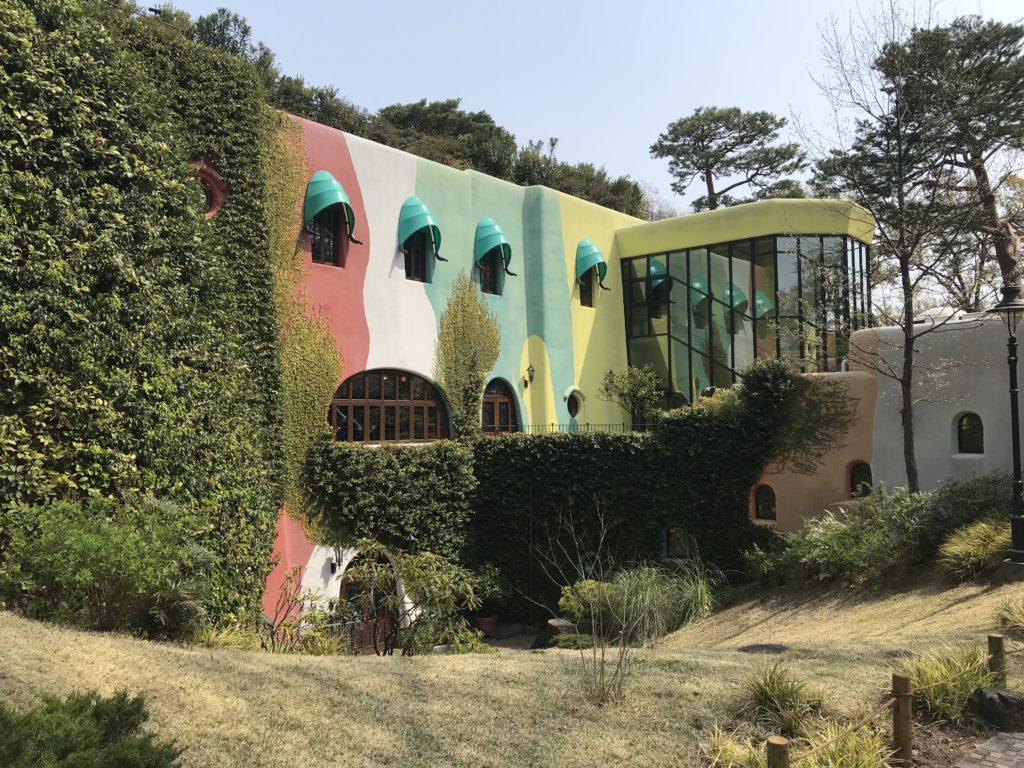
That said, it was worth it! You could not take photos inside, but it was a quirky, fun place as you would expect. Rooms filled with toys, animation techniques, original sketches, animation panels await you inside. There was some English on the exhibits, but definitely more robust in Japanese. Before you ask–nope I’m not helpful reading. I can remember about 6 kanji characters, but am much better at muddling through speaking. Still, animation is a visual art, and there wasn’t much lost!
We met up with Steff again to have a mini picnic in Ueno Park to take part in hanami (cherry blossom viewing). We watched groups of friends and coworkers drink and eat and generally be merry. And of course, we did some purikura! If you’re unfamiliar with the term, “purikura” are tricked out Japanese photo booths. They put “photo booths” as you know them in the US to shame.
Purikura have studio lighting, can make your eyes pop, and let you print out photos as stickers. Plus you can write cute phrases and add emojis to your photos. It’s super fun and cute and makes for a perfect souvenir for your Japan travels. Although a heads up is necessary: you cannot do purikura with a group of only guys. It’s meant for groups of girls or couples, so make sure you have at least one female in your party if you want to try it out!
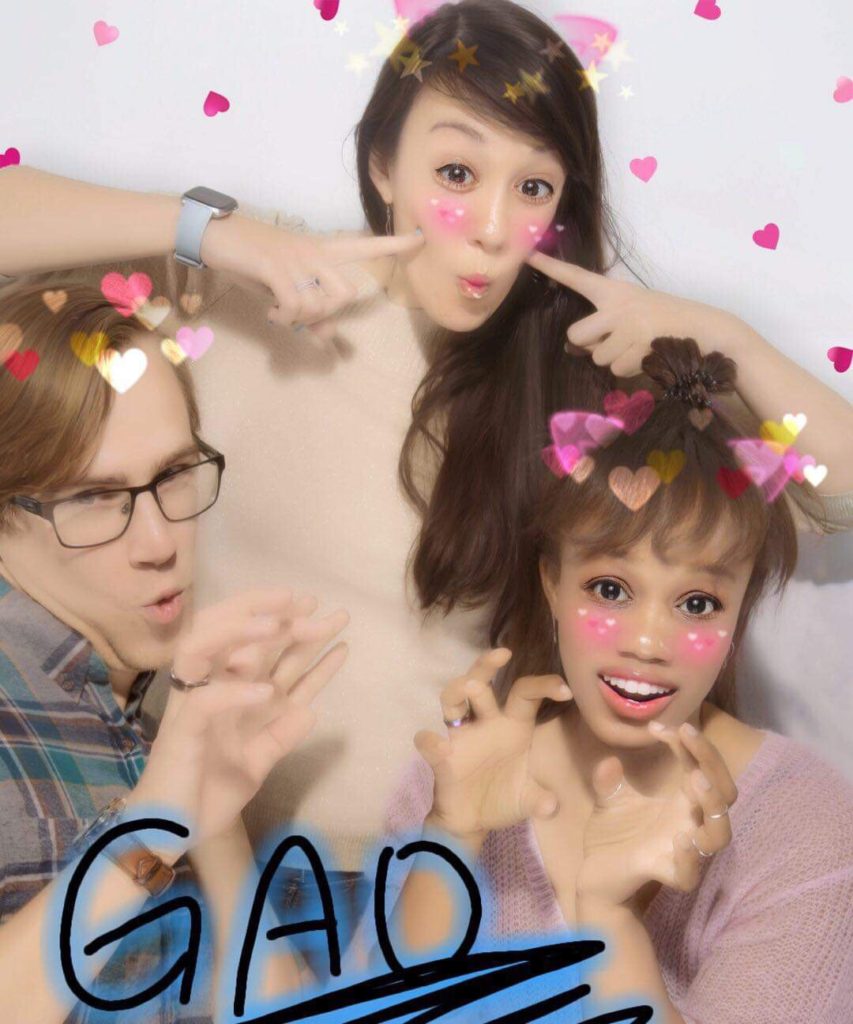
Osaka (Day 3)
Day 3
This was my first time in Osaka, and I’m sorry to say we only had one day here. It was my favorite day of the trip, which is impressive given we had so many amazing experiences. We stopped here on the way to Hiroshima since we needed to transfer Shinkansen anyway. We made our way to the !!!Cup of Noodle museum, complete with three exclamation points. It was a super fun experience, and I recommend it.
A lot of the text was in Japanese, but they did play a cute little movie with some subtitles on the company’s history. They had a wall timeline of all different ramen lines, flavors, and packaging over the years. My only regret is that we didn’t sign up ahead of time to do the ramen-making! There are two classes: ramen-making and cup decorating. Both seem geared toward younger children, but I wish we would have been able to make ramen.
Unfortunately, it requires a reservation. The cup decorating does not, however. You get to pick the ingredients and flavors of your cup, and then can color on it with markers and pens. We didn’t bother with coloring cups, since I still had a whole list of must-eats for our Japan travel.
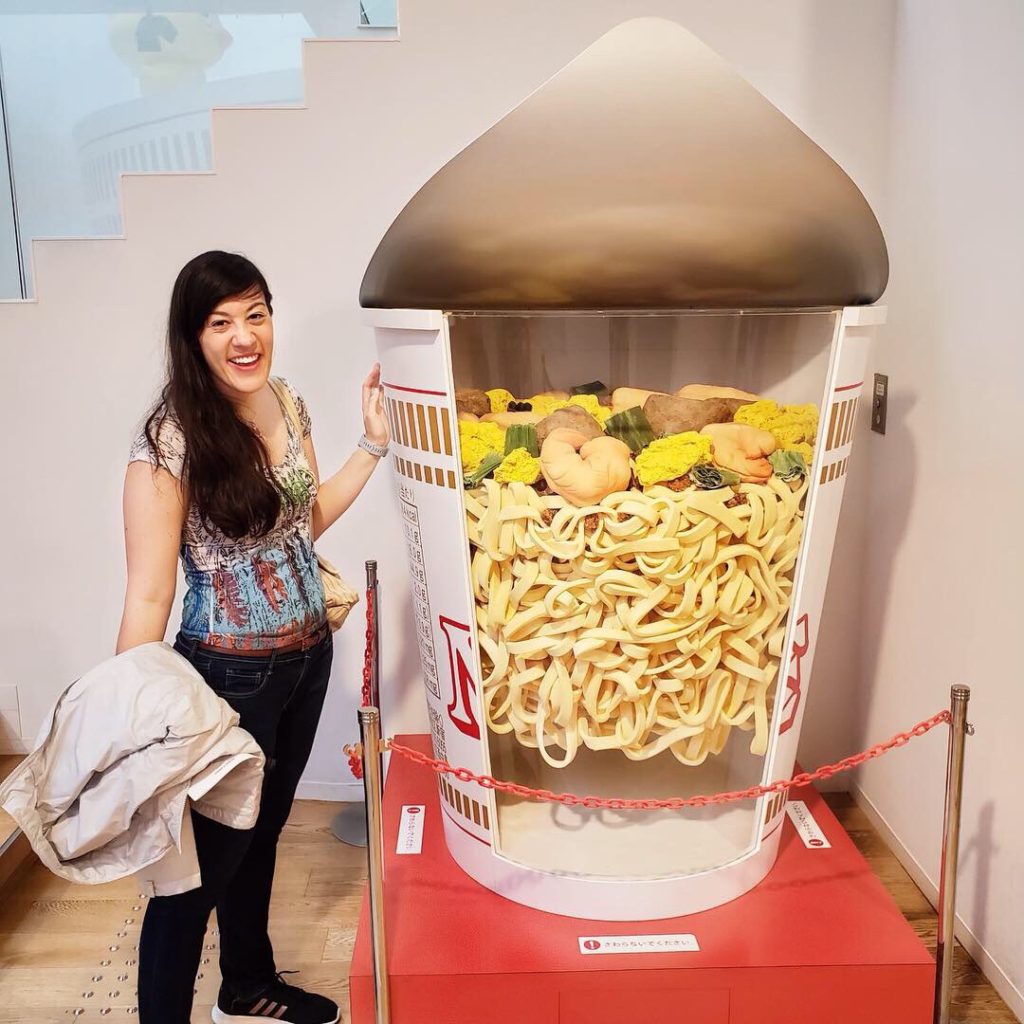
After the museum, we made our way to our ryokan (traditional Japanese inn), Otowa Sansou. It was a little off the beaten path, but we chose it for its incredible nature views. We also planned to have a kaiseki, or traditional multi-course Japanese meal there. Our hostess was wonderful but did not speak much English, so my broken Japanese definitely came in handy here. We were the only guests in the place so they upgraded us to the best room in the inn, with a full view out to the mountain. The bath area was relaxing and had a foot bath, a sauna-like room where heat radiated from the stone floor, and a bath.
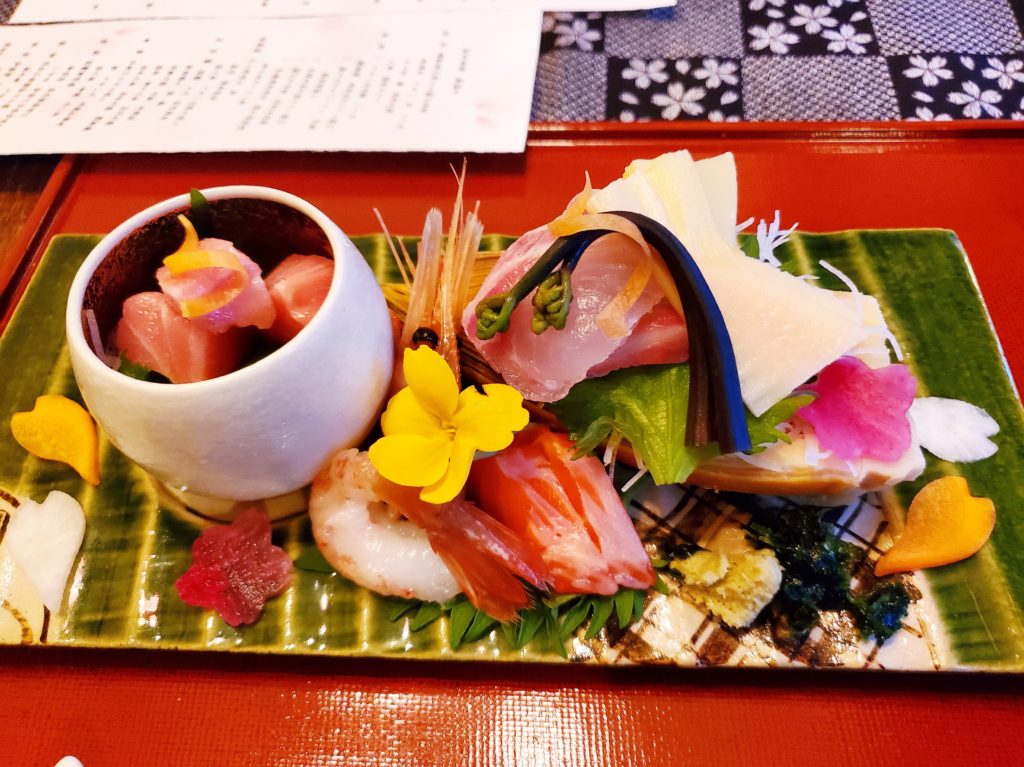
The kaiseki was definitely an adventurous and beautiful experience! It is an art form that embodies Japanese ideals, blending taste, texture, color, and presentation. Each dish is beautiful, presented with care. You’ll never eat the same meal twice since typically a kaiseki is prepared with seasonal local ingredients. It can be a one of a kind experience. I only recommend kaisekis for adventurous souls that are not picky about food.
I love Japan and Japanese food and am obsessed more than most, but there were things even I didn’t recognize. Our hostess was gracious enough to give us some pointers about what to eat and not eat. As a foreigner you have more margin for error, but it will still be an adventure. You might eat things like shrimp heads, savory gelatin bites, or even a pregnant fish! I also guarantee you’ll be STUFFED. We had 10 courses including dessert. We were about ready to roll our tubby selves out of the room at the end, but it was an incredible experience. Tyler and I spent the whole time at Otowa Sansou saying we wanted to come back.
Hiroshima (Days 4-5)
Day 4
We spent the morning in nature, hiking to a peaceful little waterfall nearby Otowa Sansou. Then we boarded the Shinkansen and made our way to Hiroshima. I was so excited to visit Hiroshima because I had never made it there when I studied abroad. When we arrived we headed straight for Hiroshima Castle! It is not original of course, thanks to the atomic bomb. It did have a lot of interesting information and even a floor of samurai swords. You couldn’t take pictures, but they did have a samurai sword you could lift. The sword is surprisingly tip-heavy and takes some muscles to keep aloft.
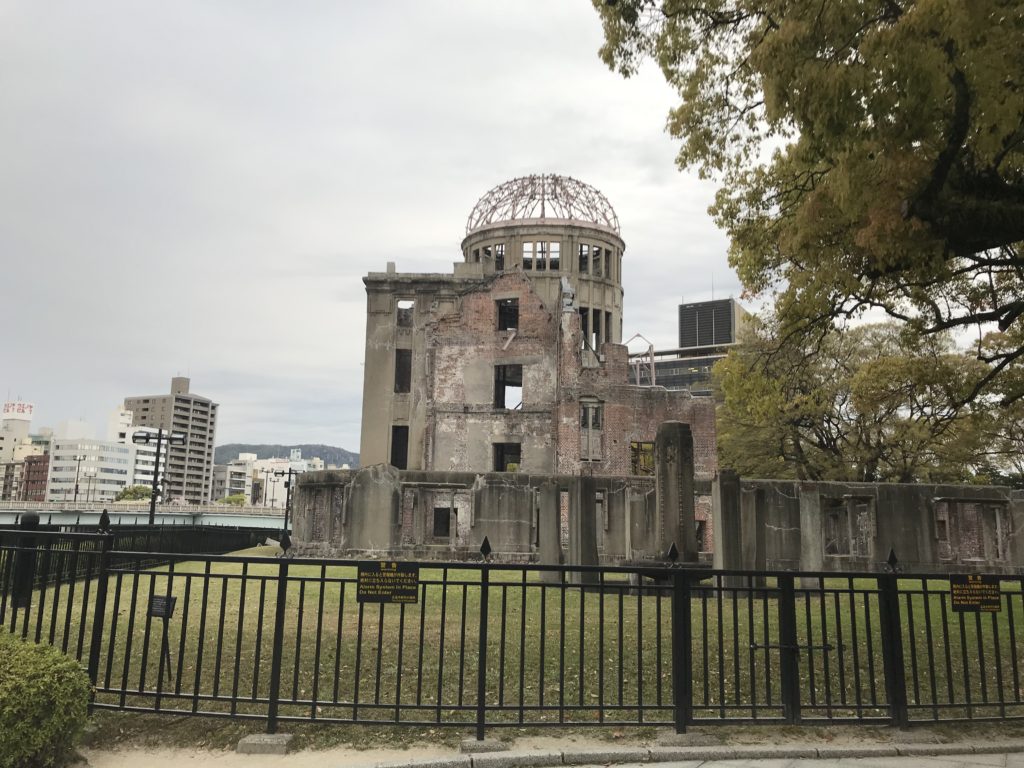
Despite a long day already, we made it over to the Hiroshima Peace Park Museum. It was a somber but eye-opening affair. The memorial focuses on the people of the tragedy and their experiences. It was extremely emotional, and I found myself tearing up several times throughout the exhibits. I know there are many opinions out there about right and wrong when it comes to the atomic bombings. I won’t explore them here.
One of the most striking things in the museum is a clock in a side lobby where we paused to rest. It counts the number of days since the Hiroshima bombing and the number of days since the last nuclear detonation in the world. On the day we visited, it read 482 days since the last nuclear bomb test in the United States on December 13, 2017. Hiroshima is really a must-see for Japan travel and to pay homage and learn about the nuclear bombs.
Day 5
Our hotel room in Hiroshima was a little plain but comfortable. It did have a nice view of the city out of our window, and they offered umbrellas to borrow at the door. Lucky for us since this morning was super rainy! We headed out early to Miyajima, an island off the coast of Hiroshima. Our JR Passes let us hop on the JR Ferry for free. We almost hopped on the wrong ferry, but then again no one checked our passes until we exited on the Miyajima side.
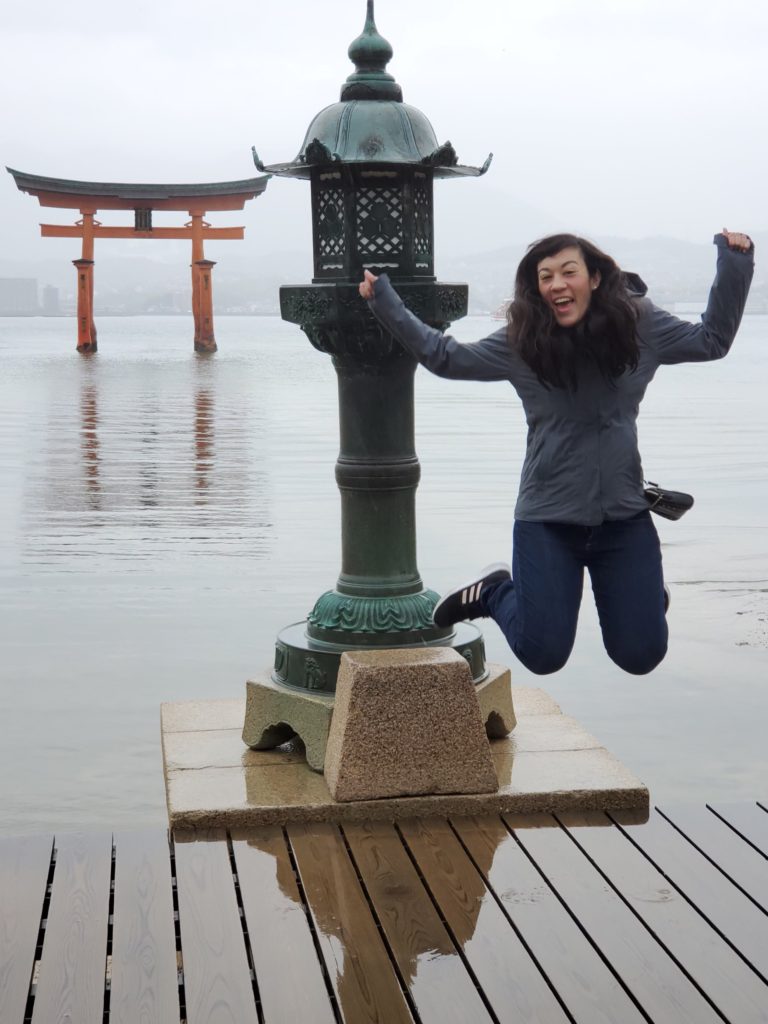
While I thought the rain might ruin the experience, I’m actually grateful for the overcast weather. It was fun to explore Miyajima without the crowds of tourists at first. If you’ve seen the iconic floating otorii gate, it’s home is at the Miyajima Shrine. You’ll find otorii gates at shrines all across your Japan travel, but this one is particularly famous. We took some beautiful photos and learned that the gate stands by its own weight.
Of course, the 7 tons of stones packed into the crossbar at the top help. A Buddhist prayer inscribes each stone, and the gate’s buried pillars help it resist tides and earthquakes. We also visited the treasure room on the island. The small exhibit has some cool Japanese artifacts, my favorite being some silver and gold leaf scrolls. My partner loved visiting the daisho-in temple. We were some of the first few tourists to enter that day. The Daisho-in temple has prayer scrolls, said to bless you if you spin them even if you can’t read the inscriptions.
Kyoto (Days 6-8)
Day 6
We were grateful we reserved Shinkansen tickets the day we arrived in Hiroshima. Even two days prior our ideal travel times were over-booked. We ended up with tickets a little later in the day than we hoped. But it just meant we checked directly into our hotel and had less time dragging luggage around the city. I had also caught a cold and been fighting some spring allergies, so I took a much-needed nap.
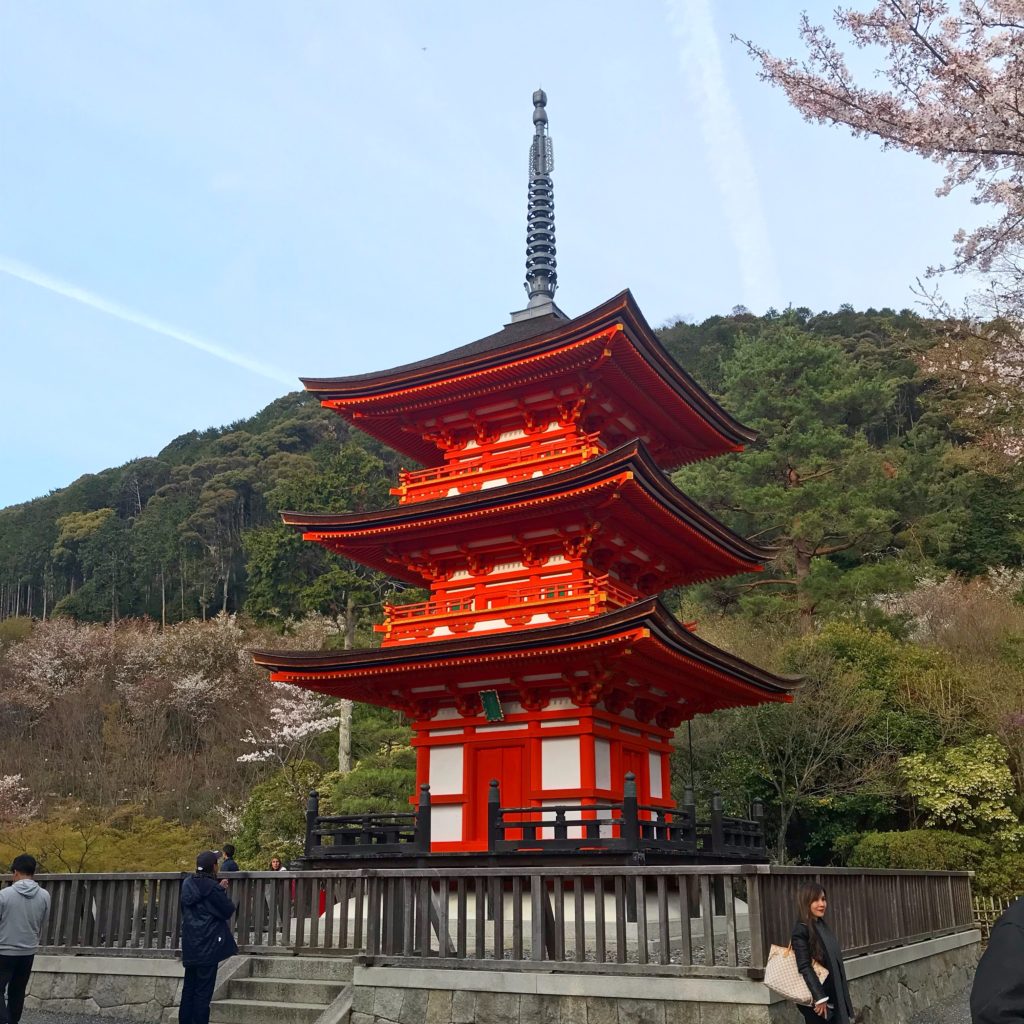
I still wasn’t feeling great, but we were in Japan, dammit, so I rallied. We made it to Kiyomizudera, one of the iconic Kyoto temples. It has a beautiful viewing deck, but the deck is currently under construction. We were still able to walk through the temple, gardens, and visit the easy child-bearing pagoda. Tyler drank from Otowa waterfall, which has three flowing streams of water. Each of the three streams represents good fortune: longevity, success in school, or fortunate love life. It’s unclear which stream is which, but don’t drink from more than one though as it is considered greedy.
Day 7
One full week! We woke up early and made our way to Arashiyama, a district in the western outskirts of Kyoto. It’s also the location of some of my favorite Japan travel memories during study abroad. This area has tons of fun things to do, and I will always recommend it as a destination. It is touristy, and I feel the prices reflect that. I actually felt that way about much of Kyoto. For example, often entry fees were 500+ yen compared to 200-300 yen in other cities. Not exorbitant, but when you’re visiting 2-4 in a day in your Japan travel that can add up, especially for groups.
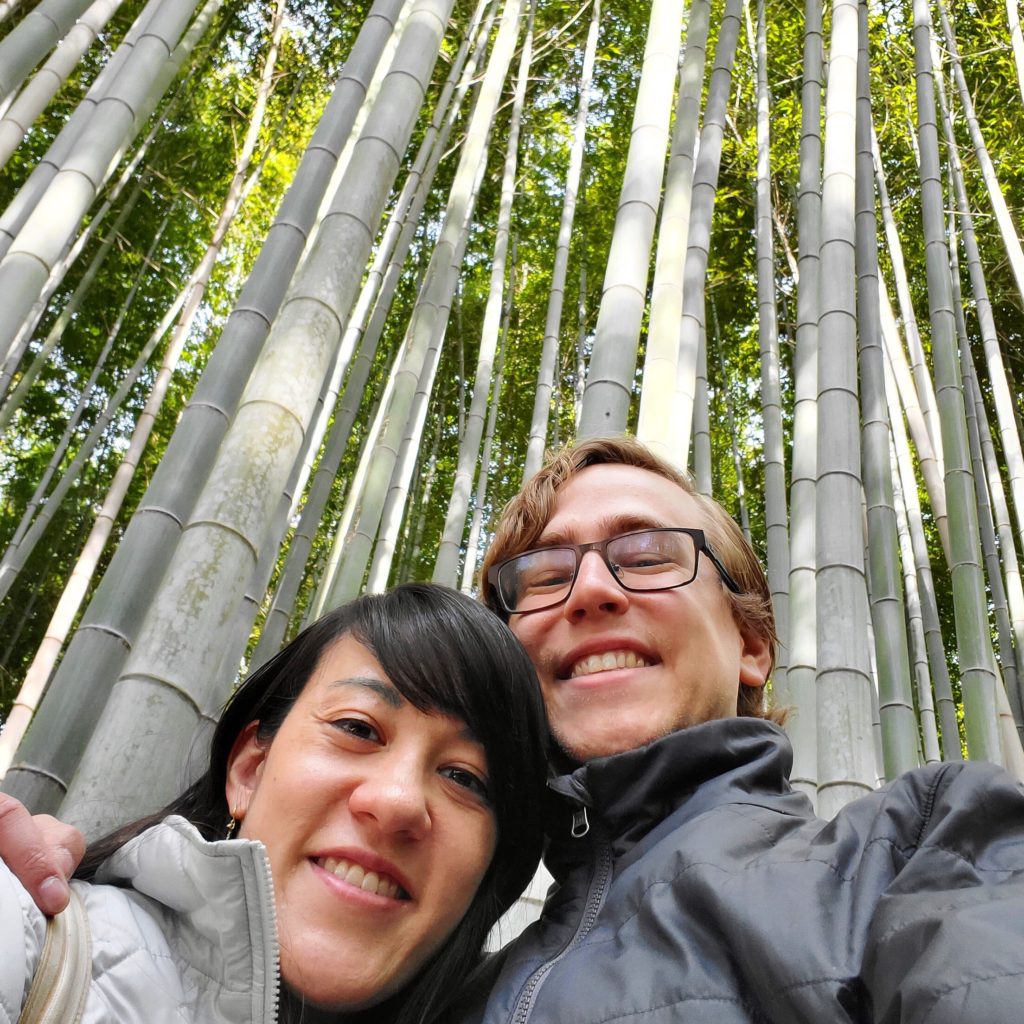
Our first stop and the reason we got up so early was Otsuka. Otsuka is a famous place in Arashiyama to experience a meal of wagyu beef. Their website states that the reservation sheet was available at 9:00 AM. We arrived at 8:30 AM, and there were already two names on the sheet ahead of us. But we were third and felt pretty good about that. The restaurant doesn’t seat guests until 11:00 AM, so we had some time to kill while we were waiting for lunch. We filled the time by visiting the bamboo grove, an impressive little forest of towering bamboo.
Despite being early in the day, lots of tourists were already out and about taking photos. We wandered downtown looking at the shopping streets, and passed by the kimono forest art installation. It’s a quirky little display by one of the train stations, but fun to walk through. You can see various kimono patterns exhibited. Tyler found a skeleton one, so of course, had to do his metal horns for a photo-op.
We made sure to arrive at Otsuka before 11:00 AM so as not to miss our reservation. It was already busy with waiting guests when we arrived around 5 minutes beforehand. We did the fat tourist thing and ordered 3 meals despite there only being two of us, but hell, it was worth it. We tried a dish of roast beef, one of chuck flap, and an A5 grade Hirai beef. They were some of the most delicious, savory, melt in your mouth beef I’ve ever had. In Tyler’s words it “ruined filet mignon for me”. It’s a taste and quality that I haven’t experienced before, and my mouth is watering just reading this.
If you want to know more about the experience, check out my post on the subject! I also go into the distinction between wagyu beef vs. kobe beef, but I won’t get bogged down here. I wrote that post while we were in Japan because I was curious and did some research, so figured I’d share that research with you! If you can make it to Arashiyama, I highly recommend making time for Otsuka. Shout-out to my coworker Peggy for the recommendation!
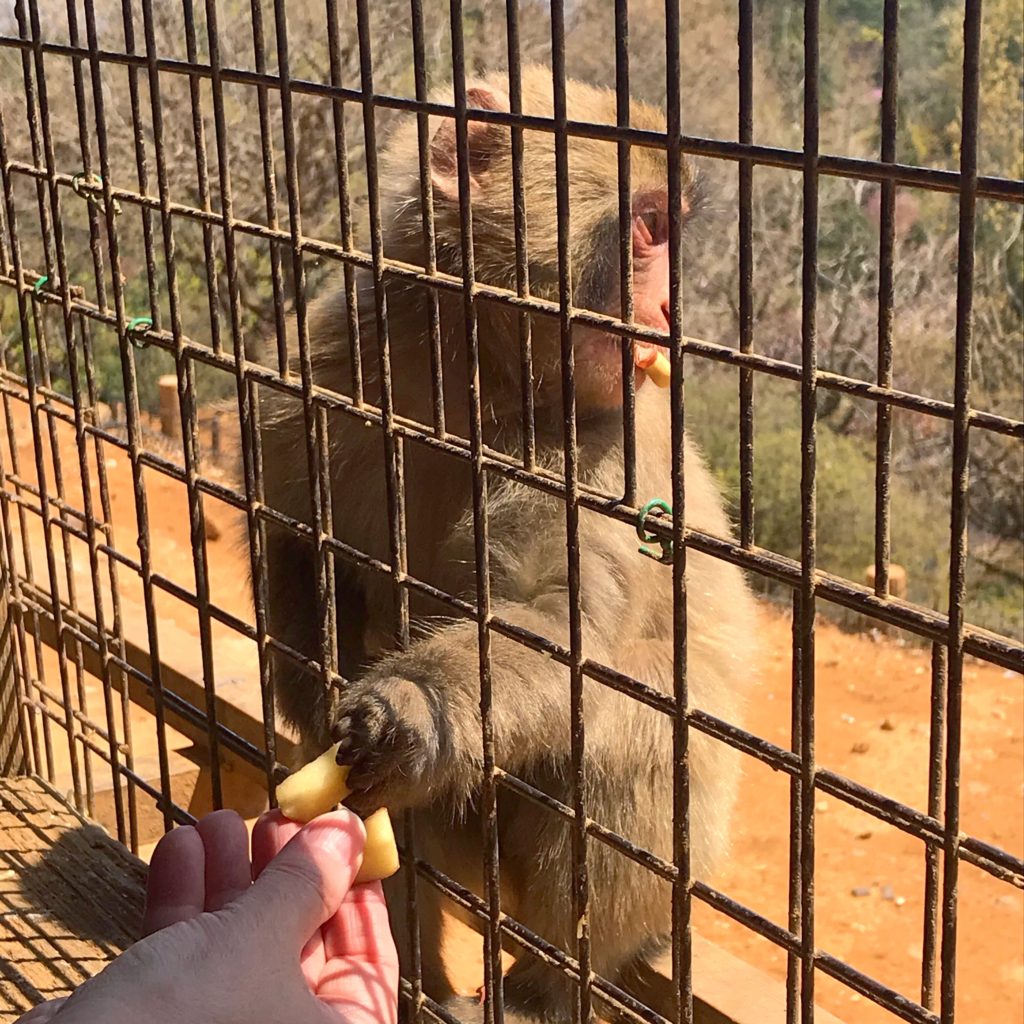
We still had a couple of things to do before leaving Arashiyama. I did some shopping and found some cute Shiba-themed bags in honor of our Shiba Inu at home. We also picked up some souvenirs and presents for our family back home. The last highlight was Iwatayama Monkey Park. For a small fee and a small hike, you can make it to a gorgeous overlook of Kyoto where monkeys run free! There’s a little building at the peak where you can purchase snacks to feed the monkeys! Both times I’ve visited, we had no trouble seeing a whole bunch of monkeys. I suppose they know they get tasty food if they hang around.
The monkeys are wild, so pay attention to the signage. Don’t approach them, and keep a meter or more away when outside the structure. Don’t stare them directly in the eyes, since that conveys aggression in the animal kingdom. Inside the enclosure, you can purchase peanuts and apples. 500 yen will get you a few more peanuts than apples, but judging the monkey’s reactions, apples are clearly the favorite! You feed them from inside and can hand them treats through wire mesh windows. Some monkeys would ignore the peanuts entirely, but they were all so cute and it was super cool to see them so close up.
Day 8
After such a packed trip already, you’d think we’d slow down, but nope we were still going full force! Day 8 we hit Ginkakuji (the silver pavilion), Kinkakuji (the golden pavilion), and Fushimi Inari Taisha (Shinto shrine). If you can swing it, try to do Ginkakuji and Kinkakuji on the same day. They’re so different and similar all at once. Kinkakuji, or the golden pavilion, is iconic and covered in gold-leaf foil. Despite the name, Ginkakuji is not covered in silver-leaf. The plans to use silver-leaf took so long they were never realized before Yoshimasa’s death.
Still, it’s a beautiful structure and has an impressive zen garden area you can walk around. Kinkakuji is set in the middle of a lake and the stones and setting of the lake portray the zen essence of the area. Of course, both are intense tourist destinations, which can detract from some of the “zen”.
Despite being iconic must-sees, you actually won’t spend too much time at either of them. You can’t go into the structures themselves. You can walk around the grounds at the silver pavilion, but the golden pavilion is more of a walk by since you’re not allowed to go swimming. Check out my Instagram @bestwithchocolate for pictures of Ginkakuji and Kinkakuji, and follow me while you’re at it!
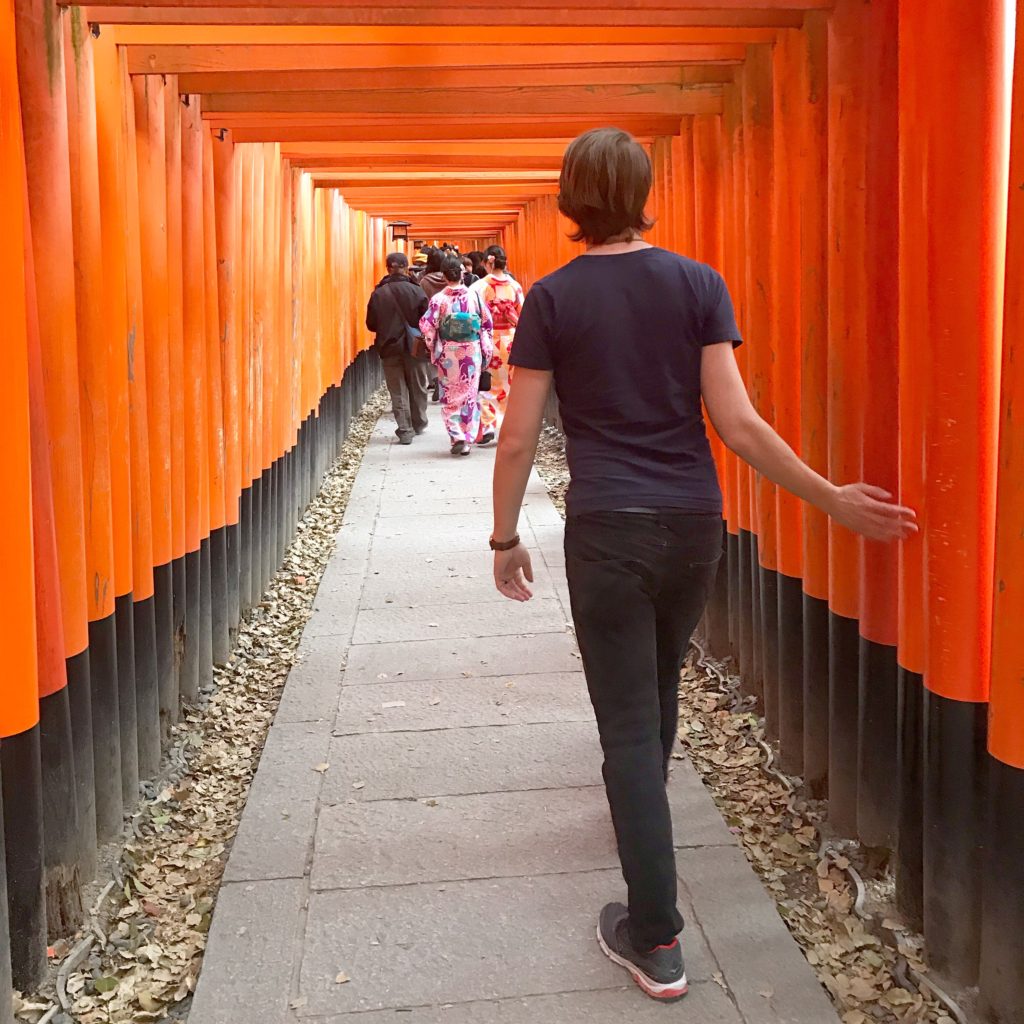
We ended up at Fushimi Inari Taisha on a whim, but are glad we did. Inari is the kami (god) of rice and is worshiped as the patron of business. Various businesses have donated over 10,000 otorii gates in honor of the god. We also spent the afternoon hunting for choco-banana yatsuhashi. Yatsuhashi are a Kyoto specialty, these little mochi triangles with filling. The chocolate banana ones are one of my favorites and I was determined to bring some home.
I have a specific fondness for chocolate banana flavored yatsuhashi and wouldn’t be deterred. Despite stopping at 5 different shops, I couldn’t find the chocolate banana ones. It was disappointing, but we found it at the end of the day right before the last shop we checked closed! I actually made sure to plan Kyoto late in our trip so I could bring yatsuhashi back home as omiyage. So obviously it was important to me.
If you’re scratching your head at the term “omiyage”, let me explain. Often translated as “souvenirs”, the translation does not do Japanese omiyage culture justice. Souvenirs are often bought for one’s self, but omiyage are things to bring back to friends and family after a trip.
You’ll find regional goods everywhere in Japan (called meibutsu) that are only found in that location. If you visit Kyoto, you will find yatsuhashi pretty much everywhere, a local specialty. The traditional flavor is a cinnamon dough wrapped around red bean paste, but you can find all sorts of flavors. Many shops will let you try the different flavors, so don’t be shy. My personal favorite is obviously the chocolate banana flavor. But the options range from matcha green tea, to black sesame, to sakura cherry blossom, and more.
We finished the day at an izakaya (bar) where I failed pretty miserably at reading the menu. We ordered an assortment of unknown fried things. Despite not knowing what I was ordering, it turned out ok, and we tried a couple tasty cocktails!
Nagoya
Day 9
Nagoya is not usually on most people’s must-see lists, but it’s special to me. This is the city where I studied abroad at Nanzan University. Since we didn’t have too much time, we didn’t make it to the area where I lived, but we did make it to the university. It was actually a pretty funny visit because I didn’t recognize a lot of it. We missed a turn and couldn’t find the main entrance, so I was all turned around.
And honestly, we had most of our classes in the same few buildings so I didn’t recognize a lot of the others. But once we re-centered ourselves it came back, the buildings I had classes in and the library! It’s a small campus, but we didn’t spend that much time there in the grand scheme of study abroad. Excepting the people I met there, our day trips and other travels were much more memorable.
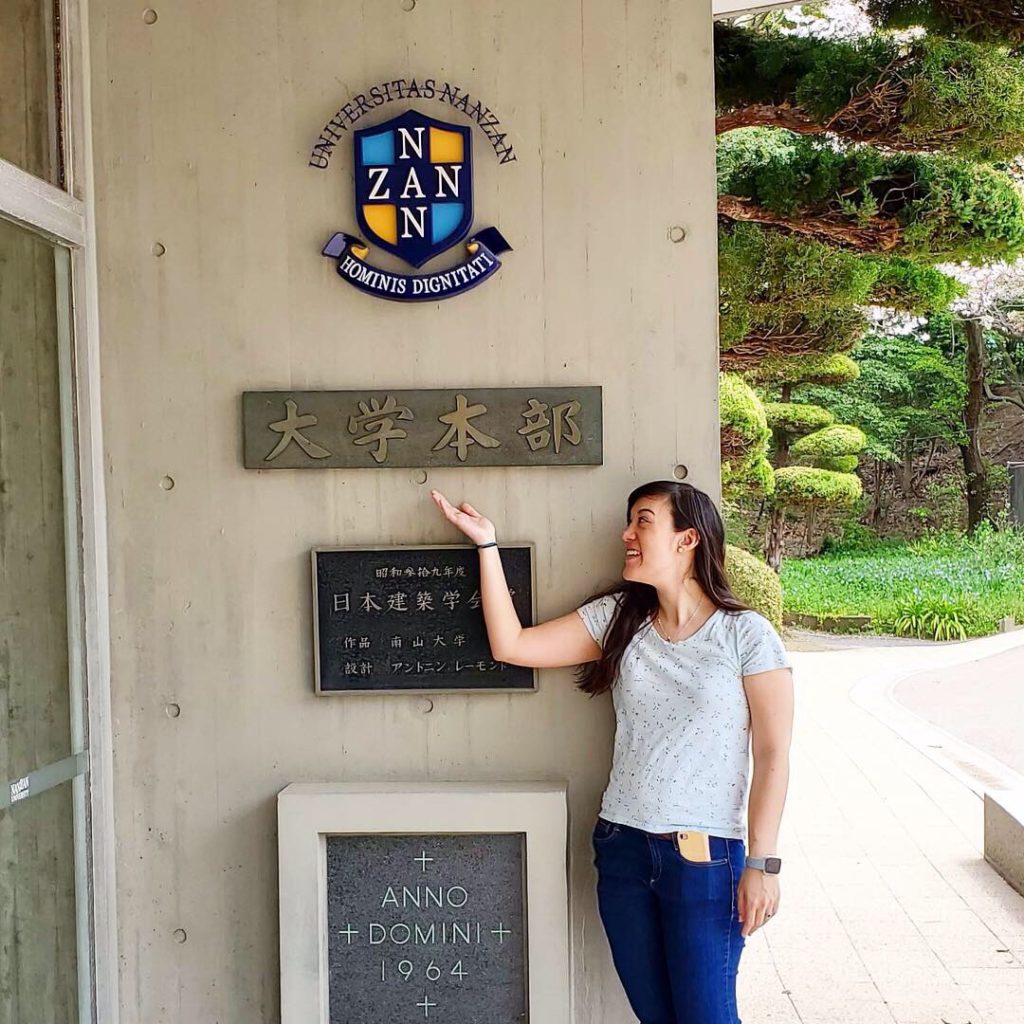
One of the places my friends and I did spend time was Sakae, a central hub of Nagoya. We wandered around the Sakae underground shopping district and I even recognized some stores I had visited during study abroad. I had a grand plan for lunch: Nagoya specialty tebasaki (fried chicken wings). My plan was foiled, though. It turns out they’re more of a bar/dinner food, so lunch wasn’t really an option. But we didn’t give up that easy.
Tyler actually hunted down a vendor in Nagoya station, where you can buy them as omiyage! Nagoya station is huge and arguably more confusing and overwhelming than Tokyo stations. It’s a large transit hub and less geared toward tourists. We spent like 30 minutes attempting to find these chicken wings, but we got them! It took us maps-ing our way through the station, and Tyler going into a train line we didn’t want to be on, but we succeeded! We ended up eating them as a snack on the train, but they were so delicious. I’m glad they lived up to the hype, otherwise I would have felt awful making us run around so much to get them.
Tokyo (Days 9-10)
Day 9
We opted to go back to the Moxy hotel for our last stint in Tokyo because it was familiar and convenient. Our friend Garland recently moved to Tokyo, and we met up with him for dinner. We did a nomihoudai (all-you-can-drink), tabehoudai (all-you-can-eat), yakiniku (grilled meat) dinner! I had actually never done yakiniku in Japan before and it was super fun. It’s basically the Japanese version of Korean BBQ if that means anything to you. They’ll bring you raw meats and dishes and you cook them yourself on a grill at your table.
The key to places like this is time management and a constant flow of food. It was a struggle at first to deal with ordering off an iPad in Japanese. Turns out there was an English option and then it went by much better. You punch in numbers for drinks and plates of meat, and they bring them to your table as they’re ready. You cook them over a coal grill and then eat them hot off the grill. Pretty sure we were sitting next to some sumo wrestlers who out-did us in finished dishes, but we held our own. Definitely a must-try if you like eating and drinking!
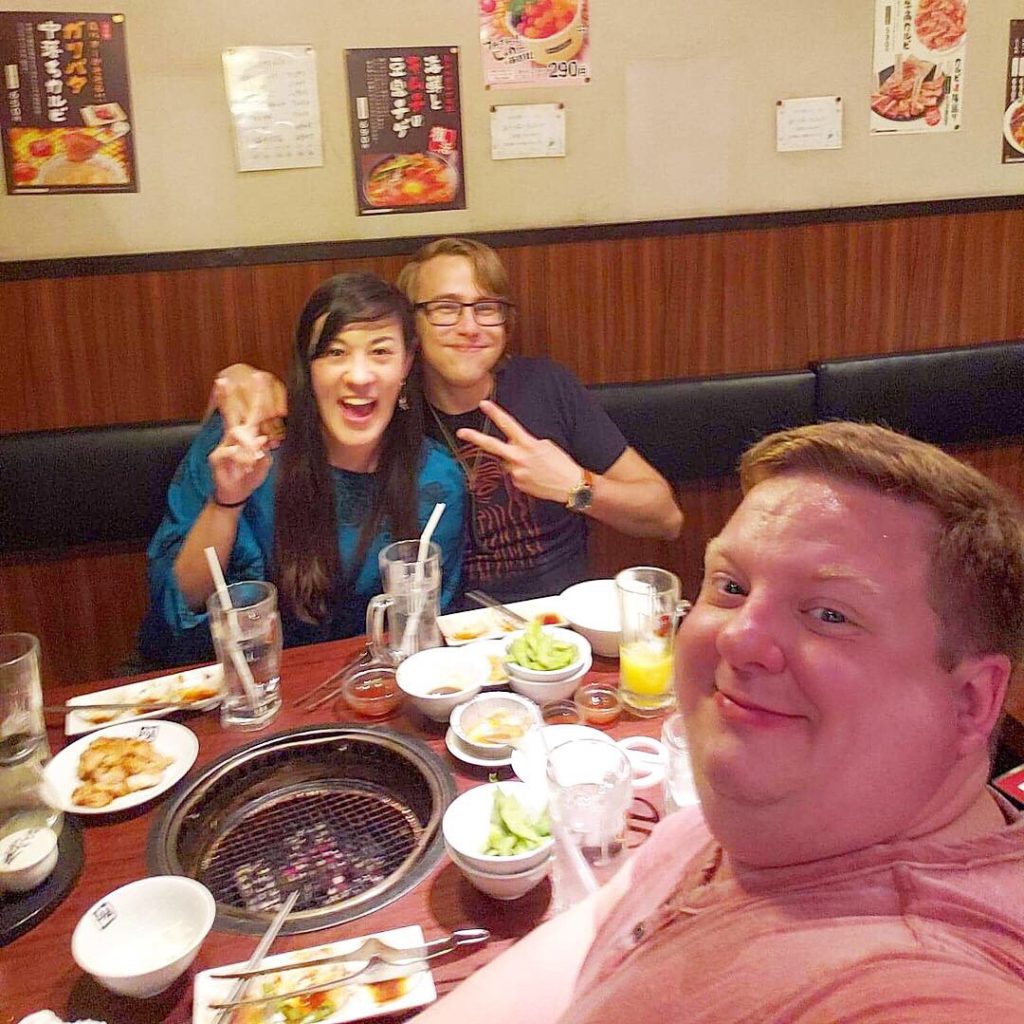
Day 10
Our last day in Japan, we only had the morning because we needed to get to our flight well before it took off at 6:00 PM. We explored Harujuku, wandering down colorful and trendy streets,. We stopped by LaForet, a trendy lolita-centered shopping mall, and even stopped at a Shiba-cafe! We spent the early afternoon hunting for KitKats, which come in all sorts of fun flavors (check out my Instagram @bestwithchocolate for all 17 flavors we collected).
I had read Akihabara was a good place to pick up a lot of varieties, but unfortunately, it was pretty slim pickings. Most of the flavors left were ones I had already collected. I did manage to find some mandarin orange-flavored kit kats before we left, so it wasn’t all in vain. I know they were a favorite of the batch I brought back from study abroad years ago.
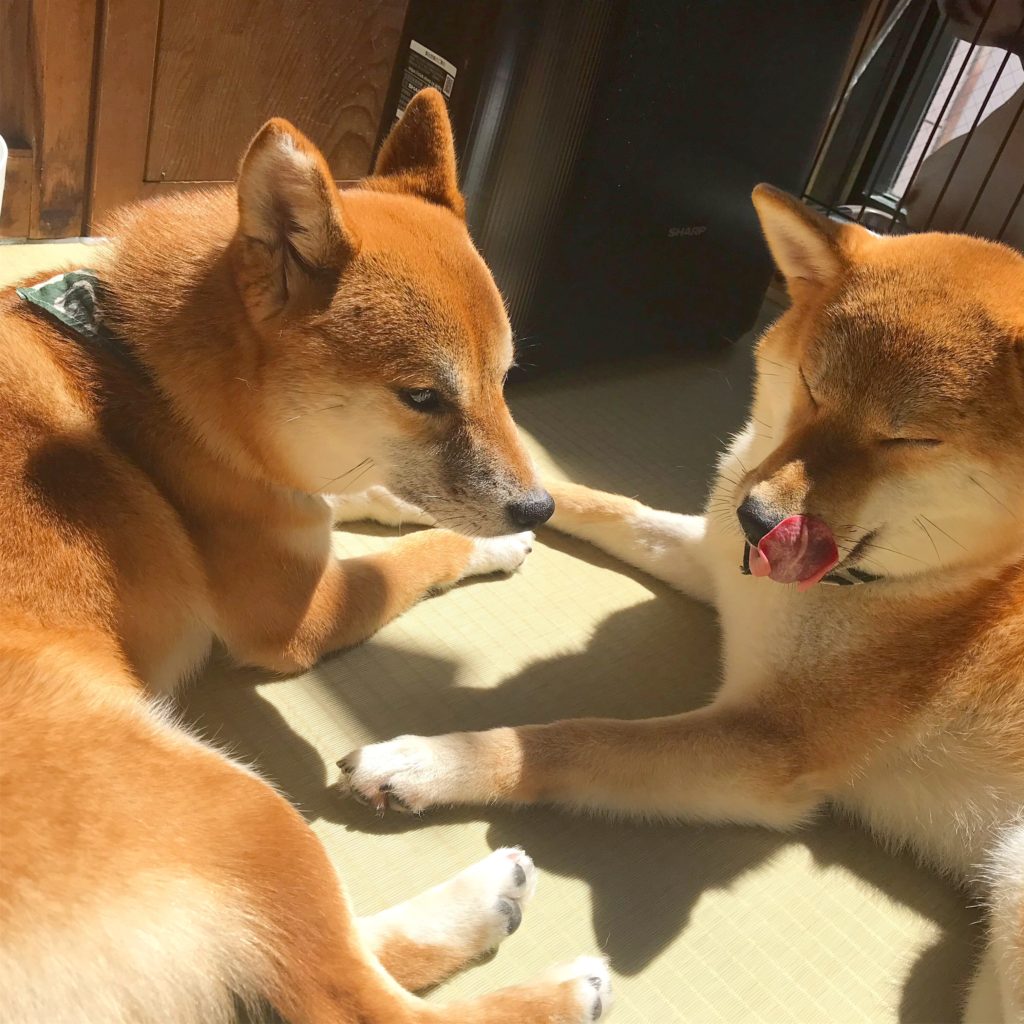
Fin
Japan is a wonderful, quirky, and adventurous place to visit, and I can’t recommend it highly enough! If you’re interested in planning your own trip, check out my the ultimate travel guide to japan; for details on how to start planning your trip!


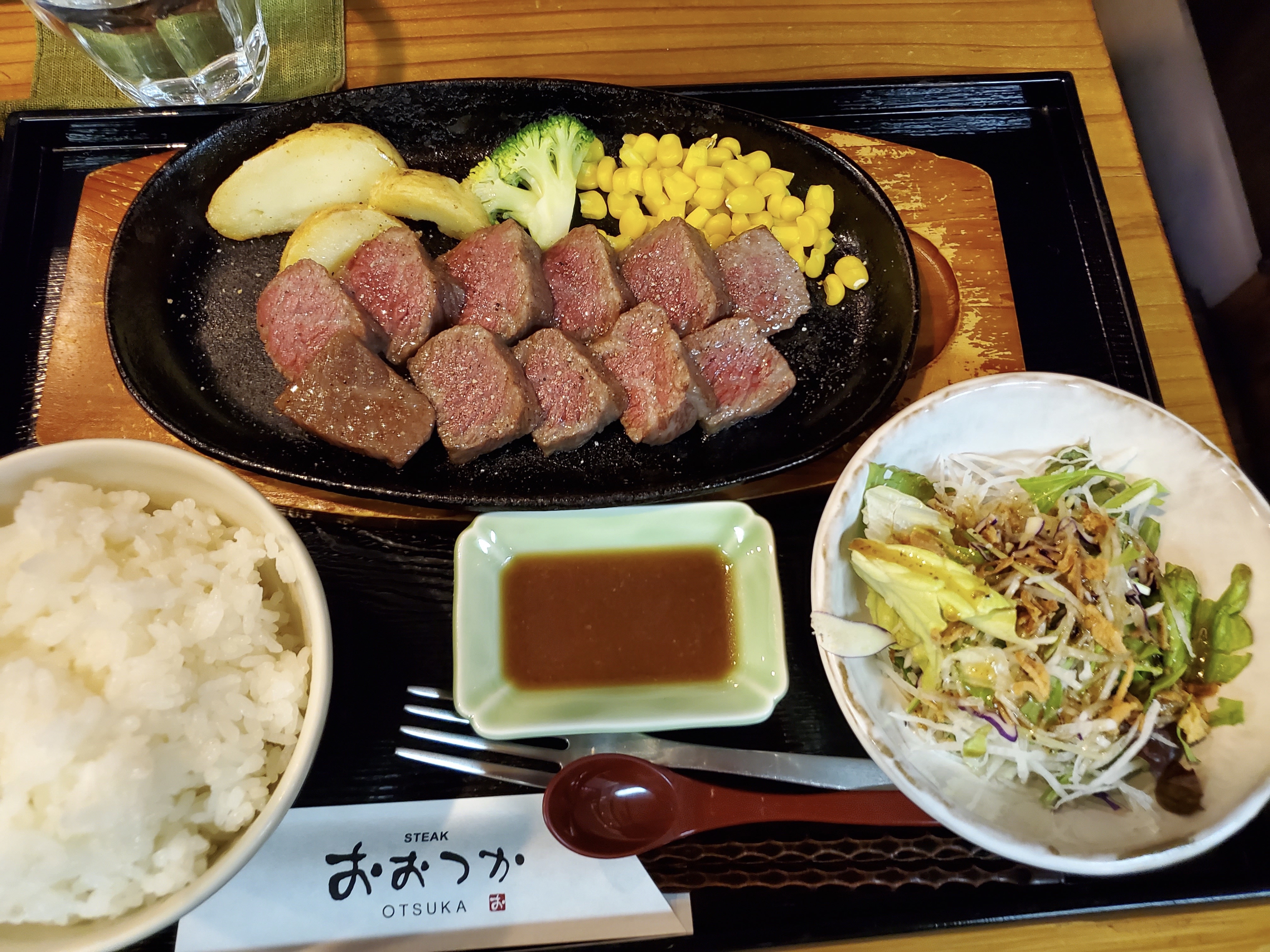
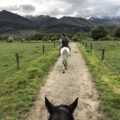
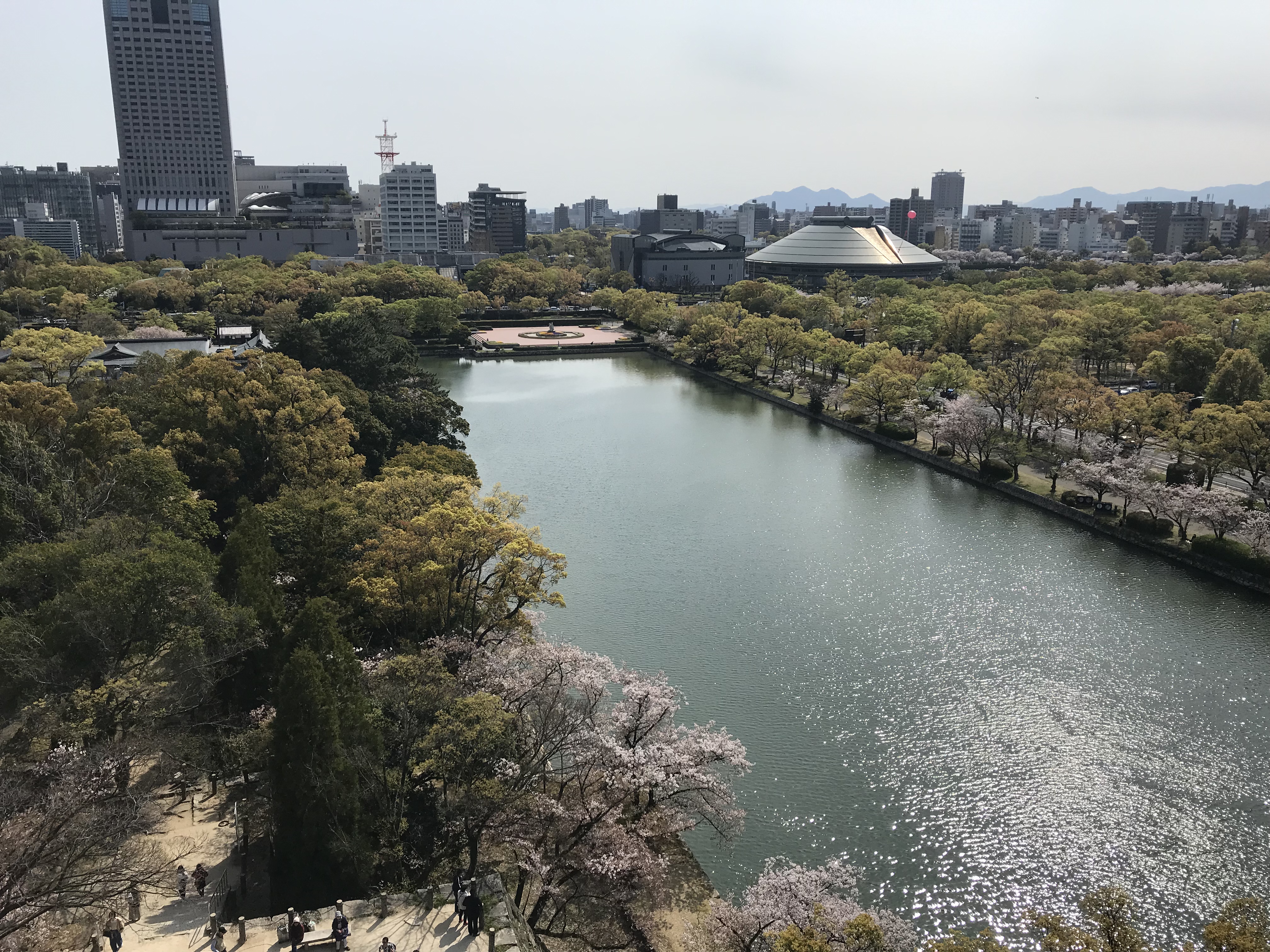
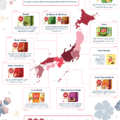
1 Comments
a travel guide to japan; – tipsychocochip
April 25, 2019 at 10:17 pm
[…] If you’re interested in reading more in-depth about our most recent trip to Japan in April 2019, check out my post 10 days in japan; […]